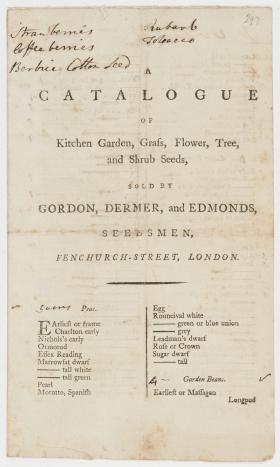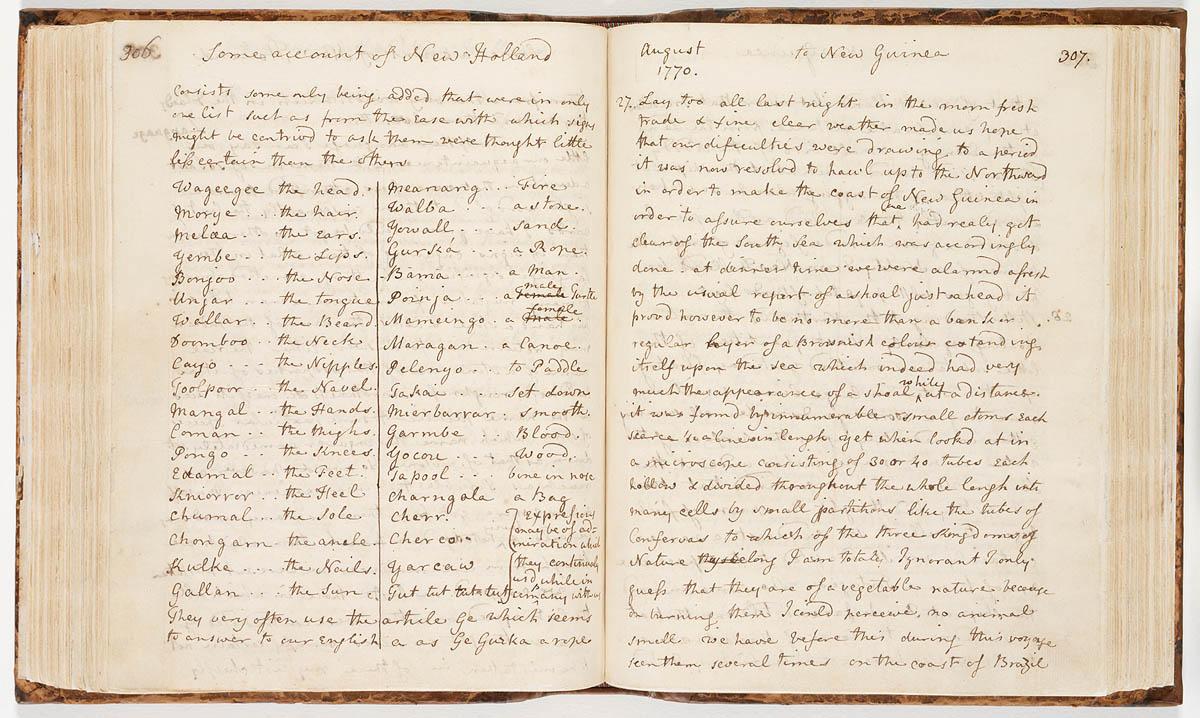Background to the Sir Joseph Banks Papers
Provenance, context and arrangement of the collection
The Library has an extensive collection relating to Sir Joseph Banks, including correspondence about Australia sent or received by Sir Joseph Banks over a thirty-year period. His letters reveal his prodigious natural history networks, his place at the centre of a widespread, energetic and productive world of science, exploration and politics and his interest and engagement with colonial NSW.
This collection also includes reports, invoices, accounts, maps and watercolours which document the far reaching influence of Banks on the colony, his communication with and support of navigators Bass and Flinders' explorations and the work of botanists like Brown, Suttor, Caley and Cunningham, who regularly sent him samples of their specimens. Banks was also an important figure in the politics of the early colony, supporting the ill-fated Governor Bligh and corresponding with three other governors of NSW.
The collection also includes one of the Library's most significant manuscripts, the Endeavour Journal. The Journal documents Cook's first voyage, including Banks' original observations of the land and people, plants and animals contributing to our understanding of Australia before European settlement. Banks also created one of the earliest Aboriginal word lists compiled by a European.
Acquisition of the papers
When Sir Joseph Banks died in 1820, he left behind a well-organised archive which documented his influential career. It was the most comprehensive archive of its kind in Britain – perhaps the world.
The custodial history of the archive is confused but essentially, the dismemberment of the archive which resulted in the loss of much information began in the 1880s when Lord Brabourne, Banks' collateral descendant, started selling the papers.
The main consignment of Banks papers held in the Mitchell Library were acquired in 1884. The papers did not come to the Library immediately but were first used in the compilation of the History of New South Wales from the records, the first volume of which appeared in 1889, published by the New South Wales Government Printer. They were again used in the multi-volume Historical records of New South Wales, which appeared from 1892 until 1901, also emanating from the Government Printer. The papers, having already been subject to earlier reorganisation, were annotated and rearranged during this process. They were transferred to the Mitchell Library when it opened as the Australiana collection in 1910 and have become known as the Brabourne collection, an appellation which obscured Banks.
Banks papers, including the Endeavour Journal, were also included in the bequest of the Library's founding benefactors David Scott Mitchell and Sir William Dixson.
In the ensuing 100 years, numerous smaller accessions have been made as estrays from the now far-flung Banks archive appeared in auction sales and dealers' catalogues. The latest acquisitions have been a single letter written by Comte de Lauraguais, acquired in 1989 for $7,500, and most recently, a single letter written by George Caley, acquired in 1996 for $850.
Organisation of the papers
The papers were rearranged to reflect the way they were used and accumulated by Banks. In some cases this was fairly straightforward, in others very complex. We know Banks kept together papers relating to specific activities, often with assigned titles, a practice which he began quite early.
Papers relating to the equipping of the Bounty voyage of William Bligh, for example, are grouped together under Banks' own title 'Plan for the Voyage with Letters from various persons who interferd in the management of it'. Letters Banks received from Bligh during the voyage of the Bounty have been grouped together, by Banks, under the title 'Correspondence Bounty'. Papers relating to the equipping of the Investigator voyage under Matthew Flinders are grouped together under the heading 'Correspondence relating to the fitting out of the Investigator for a voyage of discovery'. He kept these separate from another series titled 'Correspondence with Matthew Flinders'.
These archival series remain in their current arrangement. The only changes have been the addition of some fugitives which had been removed by previous owners and can now be reinserted. Of course none of the series represented in this project can be considered definitively complete given that the papers of Banks have been dispersed and are held by many different institutions worldwide.
It seems probable, from information contained in several documents in the collection titled 'Index to names of writers', that Banks often numbered his correspondence and arranged it in volumes alphabetically by correspondent's name, and chronologically in order of receipt, within that. He also separated foreign correspondence from domestic correspondence. A volume covered a given year then it was closed off and a new one started. Many of the letters he received from his extensive correspondents also include a folio number from these volumes, written in ink in the top right hand corner. Sometimes a single document will contain three or four folio numbers variously imposed by Banks or a clerk, the Government Printers, the Library or previous owners.
It is difficult to determine how far this arrangement extended across Banks' entire archive. For this reason it is also not possible to replicate entirely Banks' original arrangement. A decision was taken therefore to arrange letters not clearly part of a series devised by Banks into series based on correspondent and arranged chronologically within that. This practical arrangement approximates Banks' probable original arrangement.
Parts of the papers have become known to researchers by their shelf location numbers which have appeared as published citations and which are no longer relevant in the new arrangement. The previous shelf location number of every document has been recorded for inclusion on the Internet.

